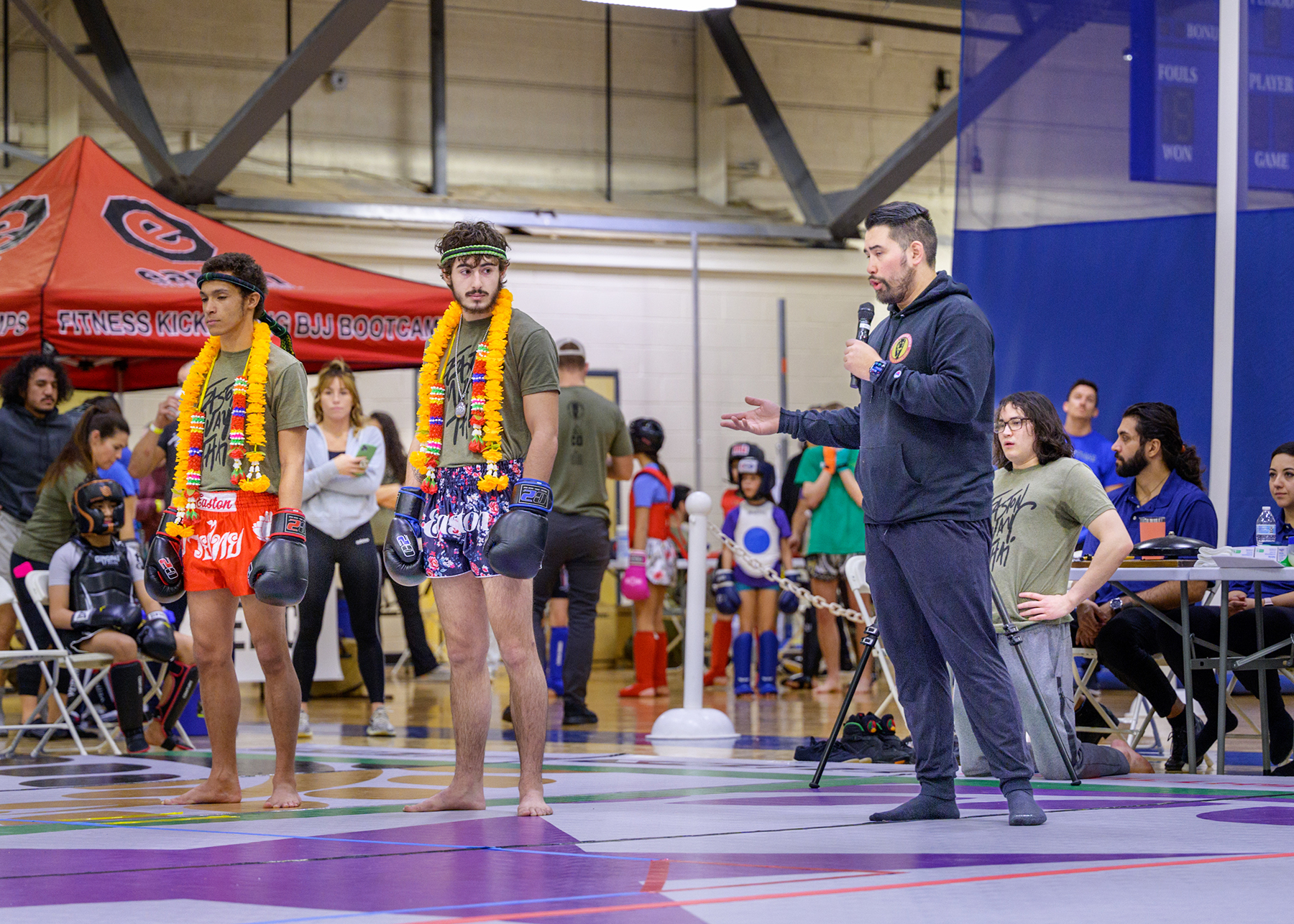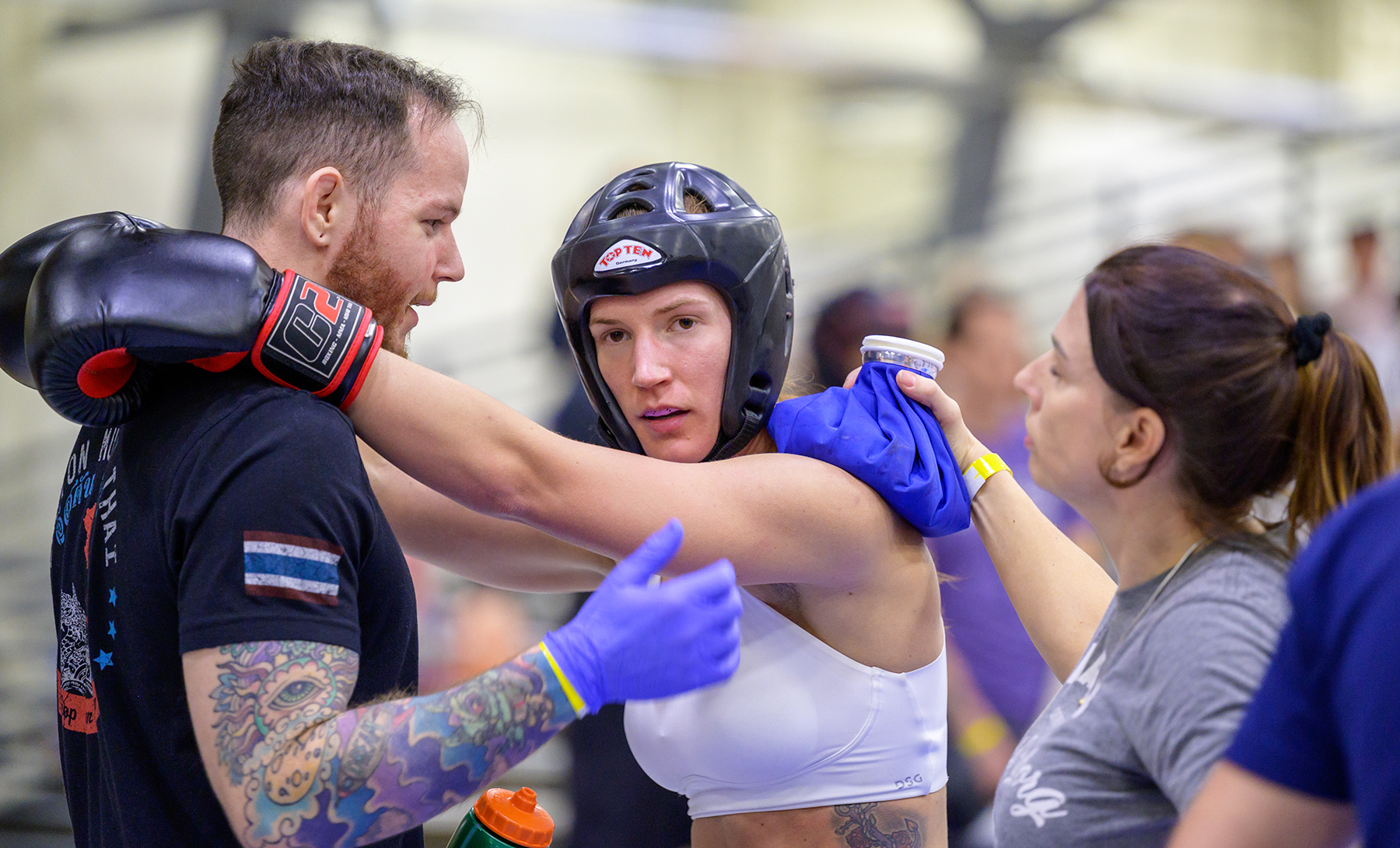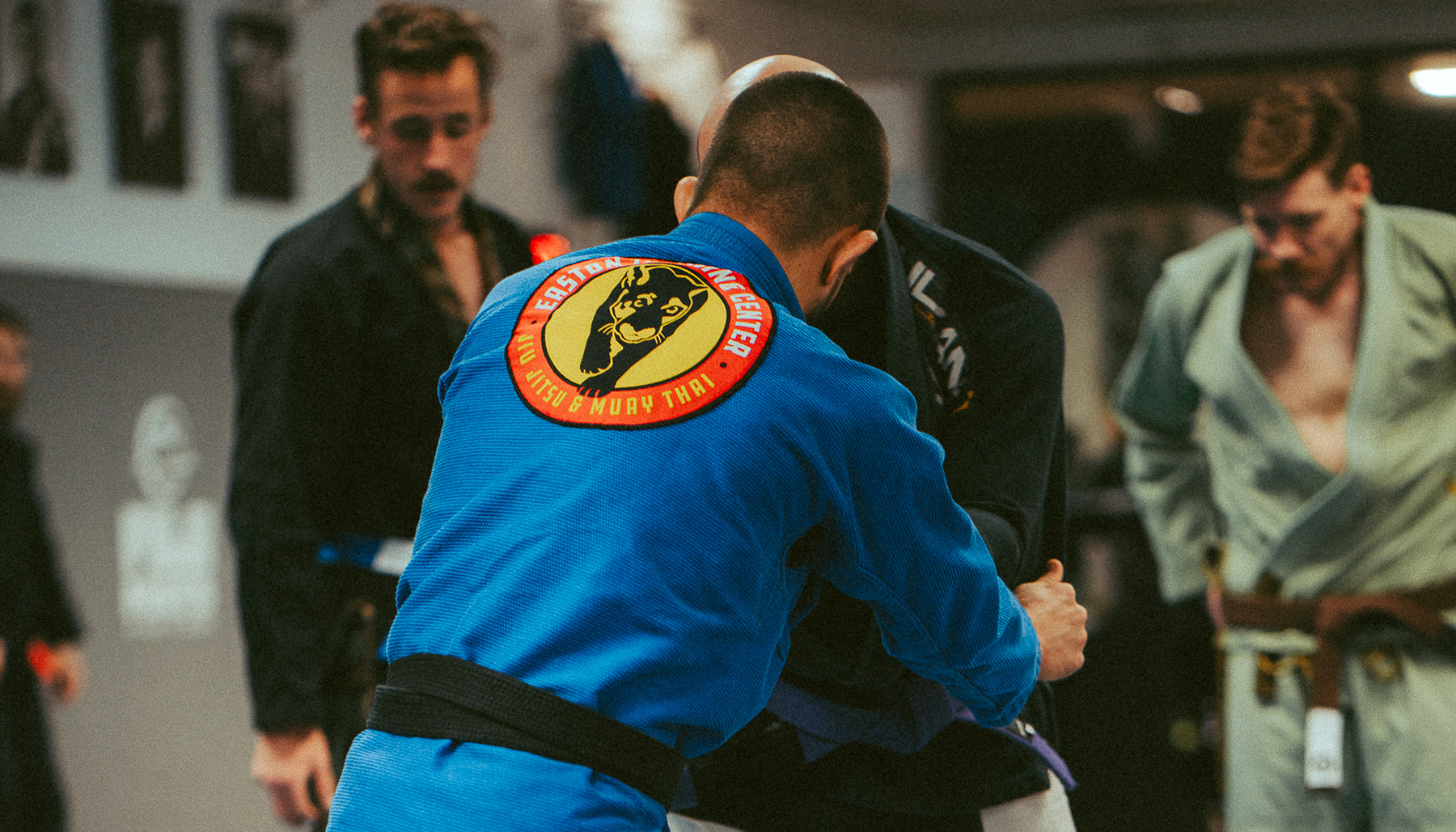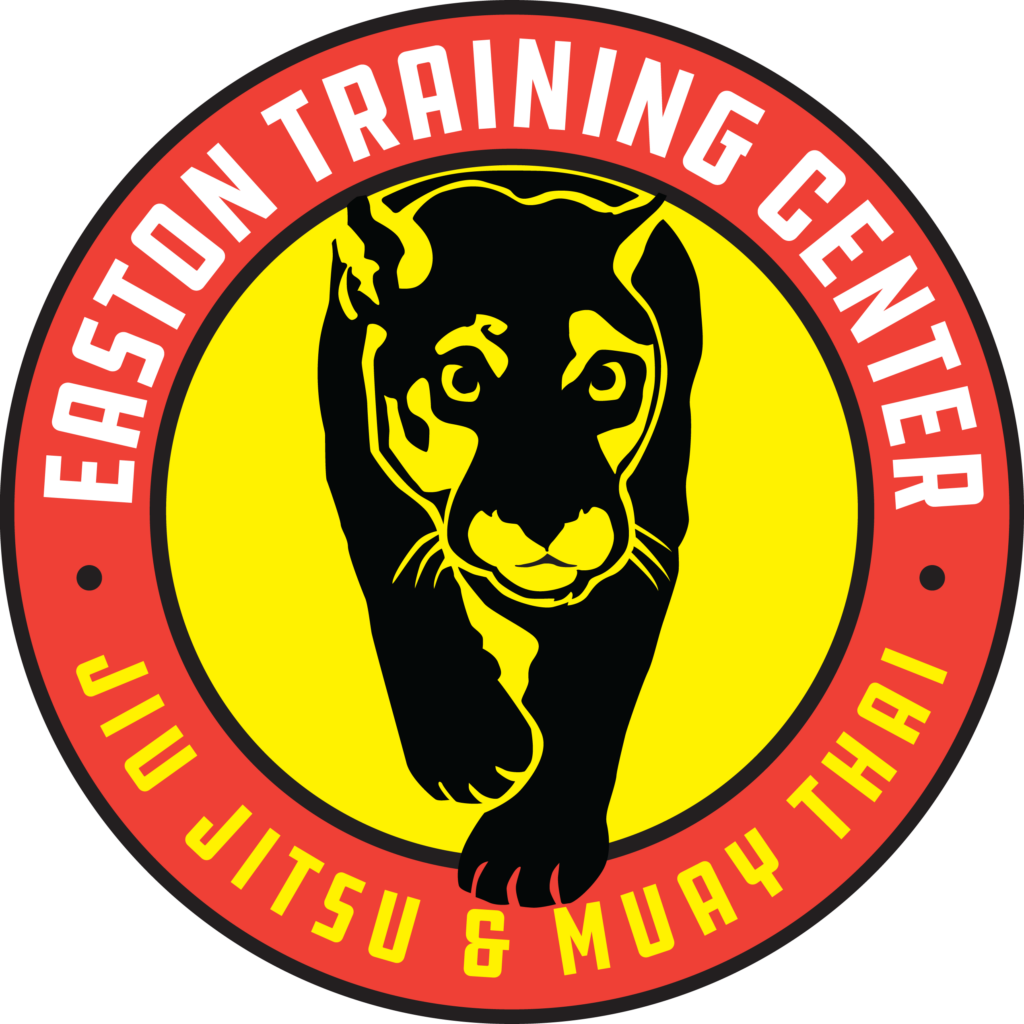Known as the “Art of 8 Limbs” due to its use of punches, kicks, elbows and knees, Muay Thai is a striking-ring sport spiked with grappling techniques through the use of clinch and sweeps.
History of Muay Thai
It first became codified as a sport in the early 1930s, and has since grown to be arguaby one of the most effective martial arts of modern times.
The origins of Muay Thai, as the name suggests, trace back to the 13th century Thailand (then Siam) when the fist Thai kingdome was set up, and the sport was called Muay Buran. The king had a piece of ground in front of the palace dedicated to his practicing shadow boxing, and a stadium where boxing contests were held to select good boxers as palace guards. It quickly became the national fighting style, and soldiers trained in Muay Thai as a way to protect themselves and their country from invading forces and to settle disputes between rival villages.
In the 16th century, the capital became occupied by neighboring Burmese invaders and thousands of Siamewse were captured. The Burmese king wanted to see if the Siamese martial art of Muay Buran could hold up against the Burmese style of fighting and selected a champion to represent Siam, Nai Khanom Tom. Nai Khanom Tom defeated 10 of the king’s champions before the king declared Siam “blessed with venom, “releasing Nai Khanom Tom and the other captured Siamese. That day, March 17, has been known as National Muay Thai Day since.
At its core, Muay Thai represents an invincible attitude stemming from self-mastery and heart. With Buddhist philosophy enmeshed in its Thai origins, Muay Thai supports the belief that each person possesses the potential to overcome any problem or difficulty. It trains us to gain control over our bodies and minds, thus gaining control over emotions and impulses through self-discipline.
Today, Muay Thai has evolved to become an essential component of mixed martial arts and continues to represent the expression of our fullest capabilities, both in body and in mind. The strength and beauty of the sport’s traditional roots underwrite Easton’s approach to our Muay Thai curriculum.
Art of Defense
Muay Thai stands at the intersection between form and function.
“Many martial arts are beautiful to watch and important to practice,” says Sean Madden, Easton’s Muay Thai Program Director and Head Coach, “but not all necessarily make combat sports.”
These arts focus more on katas, repetition of techniques and movements, almost like choreography. While Muay Thai certainly falls into the category of dance-like in its partnered, reciprocal movements, like boxing, kickboxing, and some forms of karate, it’s a combat sport at heart.
“Along with beautiful technique,” Sean says, “the goal of a combat sport is for both offensive and defense techniques to be battle-tested.”
This means that to pressure-test these techniques, we need to face ourselves in a live setting. In order to see where our strengths and weaknesses lay, and what we need to work on, we need to spar. Stay relaxed, leave your ego out of it, and make defense a priority.
[Experience Muay Thai: The Warm Up]

Starting Muay Thai
If you’re here to grow a Muay Thai practice, it helps to approach the discipline with humility from the start. First, let’s clarify: you won’t be able to spar right away. Muay Thai is a high-impact combat sport where you don’t get the chance to tap before the punch lands.
No matter how much you want to test your mettle in hard rounds or want to put yourself right in the fire, at Easton we prioritize your safety first and foremost. This means that everything from positioning and control to technique and conditioning needs to reach a level of proficiency before moving into partner work.
How does one start Muay Thai without a partner? Our Kickboxing Program is designed as an introduction to Muay Thai!
It teaches you the fundamentals of the sport on a heavy bag before you move into Muay Thai Fundamentals where you begin doing pad work with a partner. Kickboxing also helps to build a strong cardio foundation to help new students excel when they move up to Muay Thai.
Find out more about what to expect at your first Kickboxing class!
Gear For Muay Thai
Starting Kickboxing doesn’t require much — just a pair of 16oz boxing gloves and wraps to go beneathe them. We recommend the 180″ Ringside Mexican-Style Boxing Wraps!
Each Easton academy has a pro-shop with gloves and wraps to purchase. While we do also have plenty of gloves to rent, we recommend purchasing your own if you plan on continuing past your trial month. Same with the wraps — the quickwraps we have as rentals make a great first-day option so you’re not fumbling with rolls of fabric, but they’re not a great longterm option.
Proper boxing wraps are important for keeping all of the little bones in your hands safe, and the length allows you to customize the padding to your needs — like wrapping your wrists extra for support or making a thicker cushion over your knuckles. Learn to wrap your hands here!
Gloves come in a range of styles, weights and prices. We carry a few different options starting with the basic Ringside gloves, but you can always work your way up to something nicer as you delve deeper into your practice. Ask your academy’s front desk about gloves next time you’re in!
[How to Take Care of Your Muay Thai Gear]
When you move into Muay Thai, you will also need to get some shinguards for class. As you begin to work with a partner, shin-to-shin contact hurts a lot more than hitting a bag, so you’ll want to protect your legs. Some shinguards have a foot cap which covers all but the toes, so you can keep the top of your feet safe. If you’d like to try out Muay Thai first before committing to purchasing shinguards, we also have some for you to rent!
One of the other most common peices of gear you’ll see in Muay Thai are pads. Padwork is vital to learning timing, rhythm and coordination, and if you want to practice at home, padholding with a friend makes a great way to get some rounds in outside the academy.
As you move into competition, you’ll see additional gear like belly pads and padded helmets, but you won’t have to worry about that for a while!
[Get Started Training In Muay Thai]

Being a good training partner
One of the most sacred components of training in a martial art is the mutual respect between yourself and your training partner. When you do move into partner work in Muay Thai, just as spatial awareness and precision become critical, it’s important to be a good training partner. Remain humble, compassionate and self-aware; we’re a team here.
This means that along with washing your gear and maintaining good hygeine, it’s important to meet your partner where they’re at. If you’re the more experienced student, this creates an opportunity to help our partner and teach them. For more novice students, partnering with a higher belt becomes a great way to learn more. Giving the right amount of resistance in padwork is important, but if you notice your partner wanting to go lighter — follow their rhythm.
Along with mutual respect, communication in a combat sport is critical. Ask for help if you need it, and speak up if you don’t like your partner’s intensity. Advocating for what you need not only helps you, it helps your partner grow and be better for others in the future.
And on the other side, listen to your partner. If they tell you they’re recovering from an injury, go lighter. Pay attention to nonverbal cues too — like if your partner suddenly slows down. The more in tune we are with our partners, the more people will want to train with us and the better we’ll ultimately get.
Recovery for Muay Thai
We spend a lot of time using our bodies in Muay Thai. Whether your fitness goals include going pro, competing or getting a good workout in, you want to make sure you’re taking the proper time to reset our bodies between each training session.
Recovery can look like anything from integrating yoga and stretching into your routine to taking breaks or doing more low-impact activities like swimming to supplement your training. You can also invest your time into treatment like saunas, cold showers, dry needle work for pain reduction, and massage.
Specific mobilizations and stretches can help prevent a lot of the overuse injuries that result from martial arts, from common rotator cuff injuries to legs, hip and abs — where your muscles are crunched up or compressed. Engaging with recovery activities on multiple levels will help you train longer, feel better and avoid injury!
You never want to go into Muay Thai cold. This means that some preliminary movement should precede activity, and this is where stretching often comes in.
However, it’s important to note that not all stretching makes a good warmup. In the athletic world, there’s two kinds of stretching: dynamic stretching and static stretching.
[The Best Stretches for Muay Thai]
Dynamic stretching represents a form of stretching that incorporates movement. Walking toe-touches, egg rolls with your chin and knees tucked, and leg swings against a wall all constitute dynamic stretching. These movements create openness in a more gentle way through repetition, allowing you to wake up your muscles and expand flexibility in a charged and useful way.
Static stretching, the act of holding a pose for an extended timeframe (i.e., two minus), comes to mind most often when we talk about stretching. This sort of stretching is ideal after a hard workout or a long session of training, allowing your body to sink into recovery mode through breathwork and an engaged stillness.
Matthew J. Smith, Easton Blue Belt and owner of Revo Physiotherapy and Sports Performance, a Boulder-based physical therapy clinic, shares some tips for Jiu Jitsu and Muay Thai post-class stretches. Matt talks about the importance of stretching the hips and the thoracic spine – two areas which frequently take the brunt of our training. He also gives us four stretches to try; make sure to hold each one for one to two minutes!
[Training Hard? 6 Ways to Recover]
Nutrition for Muay Thai
When training a high-intensity sport like Muay Thai, it’s essential to consider hydration — including pre, post and during workouts. Hydration isn’t just about quenching your thirst; it’s about replacing the water and electrolytes your body loses during rigorous training.
Try to drink at least ½ oz of water per pound of bodyweight. Too much water will bog you down, but too little will hurt your performance. Experiencing dehydration can hinder performance and recovery, making all your hard work less effective.
After training, make sure you replace the water you’ve lost. You can also supplement with Electrolytes! Electrolytes serve vital functions in athletic performance, so make sure you’re replacing them with sports drinks like Liquid IV, Gatorade, mixes like LMNT or Nuun tablets, or even Pedialyte. All contain valuable electrolytes and simple carbohydrates to replenish your energy.
[The Power of Hydration in Sports and Fitness]
It’s also crucial to fuel your body with the right amount of protein before and after a grueling training session. Protein helps repair and build your muscles, making it a key component in recovery.
Ensure you’re consuming high-quality protein sources, such as lean meats, fish or plant-based proteins. A high quality protein powder can also be very effective here. Timing and quantity is important – aim to consume your protein meal 2-3 hours before your workout to avoid any gastrointestinal distress, and look to consume about 1g of protein per lb of bodyweight every day.
You can also tap into supplements like Creatine, Rhodiola Rosea and Magnesium for your recovery potential — read more about how to integrate these here!
[Kick the Sugar, Optimize Your Training Fuel and Feel Better]
Competition in Muay Thai
A huge part of self-defense requires the ability to stay calm under pressure. While class provides a great space to learn techniques and refine moves with friends and training partners, testing yourself in a new environment outside of your comfort zone — especially in front of hundreds of people — adds an element of intensity and unpredictaility to your training, honing mental toughness.
Competition provides a safe space and opportunity for you to practice what you’ve learned in a near-real-life scenario. Like with any martial art, you only truly know how good yours is if you can put it to the test.
Since Muay Thai is a high-impact contact sport, we require students be at least a Green Shirt and up to compete, and we offer the chance for students to get some competition experience through our biannual Easton Open event. At these scrimmages, all eight easton schools gather among friends, family and teammates in a educational show of skill!
For those who choose to pursue a competition path beyond the Easton Open, our Muay Thai Competition Team has a robust training season and travels to local and national tournaments, such as the Colorado State Tournament in Castle Rock, CO, and the Thai Boxing Association (TBA) World Expo in Des Moines, Iowa — a four day tournament that features some of the best Muay Thai athletes from the US, Canada, and surrounding countries.
Competition for amatuer fighters is broken into categories by gender, age, weight, and class: C class is for fighters with 0-4 fights, B class is between 5-12 fights, and A class is 13+ fights. (Even at C-class, fighters can make full head contact as long as they don’t use elbows or knees.)
There are also two less common classes, which organizations won’t recognize unless they’re sanctioned underneath the USMF. These are the E (Education class) and D (Decision class.) As an education class, E-class means there’s no winner or loser. We run our Easton Open at an E-class level. For Kids, this means no head-contact at all and a protective body shield specifically made for Muay Thai, as well as headgear, shin guards, Thai shorts and a mouth piece.
At E-class level, kids get used to competing in Muay Thai gear, but they’re forced to use their teep – their body kick – to target the body. Kids have to do between three to five E-class bouts before moving on to D class. Finally, there’s D-class, which carries the same rule sets as E-class but now it includes a winner and a loser. We will render a decision if there’s a winner or loser from a judge. (Kids have to win at least five D-class bouts before moving up to C-class.)
Allie Readmond: Easton’s homegrown student takes on Thailand with Team USA
[From Sparring to Scrimmage: The First Step in the Muay Thai Competition Journey]
Competition with Easton Muay Thai
Over the course of your Muay Thai journey, especially if you continue on to compete, you’ll encounter levels of engagement ranging from fighting, sparring and scrimmage. It’s important you understand the difference between them, as they have very different goals.
In a fight, the goal is to win. Not just win, but to dominate an opponent. Ideally, a fighter knocks out their opponent early in the first round while taking no damage themselves. The goal of sparring differs depending on the setting and whether or not the sparring is considered “technical” or “hard,” and in a scrimmage, the goal becomes bridging the gap between sparring and fighting.
At Easton, the first step in the competition pipeline involves participating in a scrimmage match like our Easton Open. When you sign up for the Easton Open, you must also commit to an intentse 6-10 week training program we call Fight Camp. To give students a fully immersive simulation of what a real fight feels like, we prioritize their training to make sure competitors aren’t just technically prepared, but also mentally.
If you sign up for Fight Camp, your unique regimen will include classes, strength and conditioning, pad work, diet, and strategy sessions with your coaches. While intentionally tough to prepare you for battle, the team-building aspect of Fight Camp also becomes critical to building trust, camaraderie and solidarity with your fellow competitors and training partners.
So, if this is your first time competing — what can you expect at a scrimmage like the Easton Open?
As we mention earlier, a scrimmage match is not a fight. In a fight, the intent is to hurt or damage an opponent to the point where they can no longer continue. In a scrimmage match, your intention should definitely not include knocking out your opponent — rather, to simulate a fight environment while keeping the competitors safe.
A scrimmage match essentially means hard sparring rounds. Of course, you get plenty of sparring rounds in the practice room once you’ve reached the requisite rank, but the rounds you get in class are not hard sparring rounds. In the training room, we focus on technical sparring (tech sparring), with an emphasis on reducing the speed and power of your strikes in favor of focusing on building good reactions, feints and fakes, and strong defensive skills.
Tech sparring, an important step in the journey of developing your Muay Thai toolbelt, is usually performed at 20-30% of full speed and power, and it’s one of the best tools to improving your skills quickly. Tech sparring offers advanced practitioners the space to slow things down and work on installing new techniques and skills in their game without worrying about getting injured.
With hard sparring, the focus becomes implementing a game plan and winning rounds against your partner. Unlike the friendly and fun tenor of tech sparring, with hard sparring there’s no mercy. The speed and power gets cranked up to around 80%, with a strict emphasis on reducing power on strikes to the head, and is generally reserved for those on the competition team, students who’ve trained for a significant amount of time and are preparing for a fight.
Once a competitor has done a scrimmage, or several scrimmages, they may be eligible to compete in an out-of-house smoker, which has the same intention and intensity as a real fight. After proving themselves at an out-of-house smoker, a competitor could be ready to take the next step to real fights at the amateur level – local shows and local tournaments. From there, the pipeline leads to national tournaments, out-of-state fights, and, eventually, fighting at a professional level and internationally.
You don’t have to compartmentalize your training. There’s plenty you can do for your Muay Thai journey outside the academy. From working on your cardio and strength training, to balance exercises and active rest days, mindset matters most when it comes to training; the more you lean in, the easier its required rigor will become.
Competition for kids in Muay Thai is a bit different, so make sure to check out our designated article for more information, rules and regulations. Our priority is to help your child create a safe, positive, and formative experience that builds confidence and inspires them to keep working hard.
[Easton’s First All-Academy Sparring: 90+ People On the Mats]

Muay Thai Ranking System
Unlike Brazilian Jiu Jitsu with its IBJJF system, schools set their own rank standards when it comes to Muay Thai. These ranks highlight progression for students and set the bar of requirement for attending certain classes. Easton’s ranking system carefully prioritizes technique and length of time training in assessing the belt, or shirt, levels of each student.
In our adult program, we use a colored shirt ranking system with eight ranks which goes from white to black. The second shirt in the sequence, yellow, opens passage into Muay Thai classes. Progressing from Kickboxing to Muay Thai Yellow requires students to demonstrate consistent practice, technical improvement, and awareness of space and body.
Sometimes students come to us already having prior experience. If this is you, during your first kickboxing class, you can request that a coach assess you for clearance to Muay Thai. If approved for Muay Thai, your coach will assign you a rank after several more classes, based on your level of skill.
Many of our students come to us from a boxing background and some aren’t initially interested in moving into Muay Thai. Maybe you’re not trying to punch anyone — that’s totally fine. You can stick with Kickboxing forever and stay in great shape.
Easton’s Ranking System
White Shirt
You’ve been attending KB classes for a month with us and have seen some of the fundamental attacks and defenses. You have a willingness to learn and we’re happy to teach you!
Yellow Shirt
You are now familiar with the Kickboxing curriculum and have learned basic stance, offense, and defense. Your conditioning has improved as well. You are now eligible for Muay Thai Fundamentals!
Orange Shirt
You are continuing to expand your tool box with new types of Muay Thai offense and defense. You are getting better at holding pads and working with a partner in the Muay Thai classes. You are now ready to try Intermediate Drilling and Sparring!
[The Best Stretches For Muay Thai]
Green Shirt
Your overall Muay Thai game is developing and you are starting to connect the dots with technical sparring. Your skills as a pad holder have also increased! At Green Shirt, you are eligible to begin full-contact sparring as well as train for the Easton Muay Thai Smoker!

Blue Shirt
Blue Shirt means you are now Advanced! At this level, you are a proficient pad holder and training partner. You have started to hone in on your style of Muay Thai. You are able to work with partners of all experience levels and types! You are now eligible for Muay Thai Advanced.
Purple Shirt
You’ve developed your own style and understand the sport side of Muay Thai, from scoring to traditions and customs. This rank shows dedication and consistency, and typically comes after 4-5 years of study.
Brown Shirt
A brown shirt is basically a black shirt, without the time. You’ve shown technical expertise, conceptual understanding and knowledge of Muay Thai’s customs and traditions. Not only do you have your own style, but you can identify other styles and know how to neutralize them.
Black Shirt
You show an outstanding dedication and commitment to training and studying Muay Thai, and technical and conceptual expertise. After a decade of training, you’re basically a Muay Thai encyclopedia!
Want to try a Kickboxing class? Sign up for a free class at one of our eight locations! And if you have access to a heavy bag, we’ve compiled a series of heavy bag workouts to try at home. By supplementing your regular classes with some focused solo training, you can continue to improve your technical work outside of class.
Easton Muay Thai Ranking System






